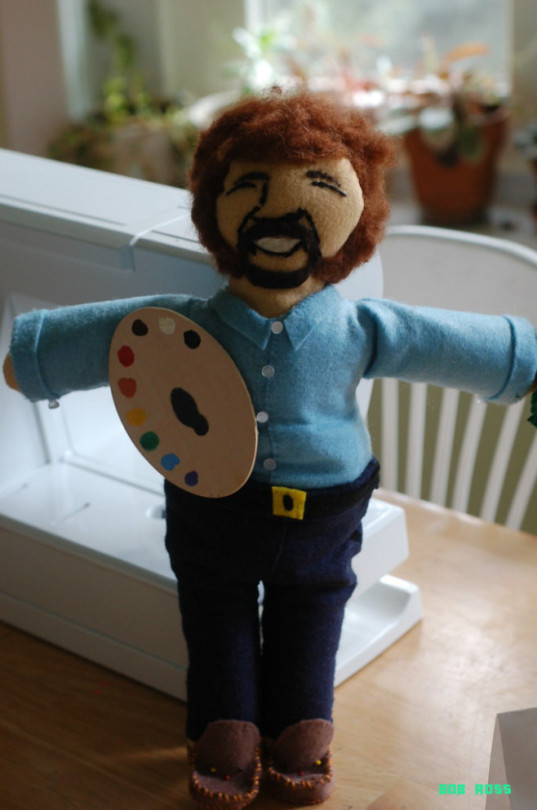#csmonitor
Explore tagged Tumblr posts
Text
youtube
[Video transcript available below in the comment section]
A new language has been spreading within the DeafBlind community, and has revolutionized how some DeafBlind people communicate. Called Protactile, or PT, the language uses touch as its medium of communication. PT emerged in 2007, when a group of DeafBlind people in Seattle began exploring their natural tactile instinct. Rooted in DeafBlind people's experience, PT aims to resolve previous communication difficulties for DeafBlind people, and advance the community's autonomy. Today, the language has reached thousands of people, and is still evolving.
Visit the Monitor online at: http://www.csmonitor.com/daily
Subscribe to our Youtube channel: / csmonitor100
Follow us on Facebook: / christiansciencemonitor
Follow us on Twitter: / csmonitor
This video was originally posted onto YouTube on January 15th, 2020. I will put down the video transcript under the read more.
[Video transcript part 1]
The video opens with a scene of Jaimi Lard, a DeafBlind woman, and Christine Dwyer, a hearing and sighted interpreter. They are demonstrating elements of Protactile language together. Christine describes the layout of a building to Jaimi in Protactile. Jaimi holds out one hand, palm up, to represent the floor. A close up shows Christine’s hand “walking” with two fingers on Jaimi’s palm. Jaimi keeps her other hand on top of Christine’s hand to follow her movements. Then Christine signs and applies various touches to Jaimi’s palm. Jing Peng, reporter and the narrator of this video, sits next to them and watches. There is a marimba soundtrack, which gets softer as the male narrator begins to speak.
Narrator: This is a new language that could change the lives of thousands of DeafBlind people.
The video cuts to a shot of Christine describing a detachable camera lens to Jaimi. Jaimi makes a loose fist to represent the lens. Christine taps on Jaimi’s hand and applies twisting motions to it. Jaimi’s other hand stays on one of Christine’s hands to track her movements.
The words “Protactile (PT)” appear on the top left of the screen.
Narrator: It’s called Protactile, or PT, and it’s based entirely on the sense of touch.
The video cuts to a scene of four DeafBlind people speaking PT. Two people are seated directly in front of the camera, and two others are seated further in the background. Each pair of people sit closely together, facing each other, the outer sides of their thighs pressed together. As the speaker talks with their hands, the person receiving the message follows the conversation with one hand, and uses the other hand to provide reactions on the speaker’s leg.
The video then cuts to another scene, where eight DeafBlind people are seated in four pairs in one long row. They are talking in PT.
Narrator: PT emerged in 2007 in the DeafBlind community. And it’s still growing and spreading.
The video cuts to a scene of Jaimi and Christine demonstrating elements of PT to around 50 people in a conference room. Jaimi and Christine stand side by side. Jaimi holds out her hand, palm up. Christine holds Jaimi’s palm with one hand. Her other hand traces lines on the palm, then applies various finger taps to it. Jaimi’s other hand follows Christine’s hand movement.
The text “Jaimi Lard” and “Christine Dwyer” appear on screen, near Jaimi and Christine respectively. Each name has an arrow pointing to the person it refers to.
Narrator: This is Jaimi Lard, she and her hearing and sighted interpreter, Christine Dwyer, have incorporated elements of PT in their communication.
Christine (speaking to the audience): I've known her for 30 years, and we have changed the way we communicate.
The video cuts to an interview setting. Jaimi sits in the middle of an office, flanked on either side by Christine and Jing. The text “Jing Peng, Reporter” appears under Jing’s chest. Both Christine and Jing have one hand placed on Jaimi’s shoulder. Christine and Jaimi’s knees touch.
Narrator: For this interview, Jaimi speaks in American Sign Language, which Christine interprets.
Jaimi (answering a question about PT): By getting it tactilely, we were able to be included in more.
[Video transcript part 2]
The video cuts back to the conference room. Jaimi addresses her audience in ASL. Christine stands next to Jaimi, keeping one hand on Jaimi’s back as she interprets.
Jaimi (speaking to the audience): I was born deaf and blind.
Narrator: Jaimi works as a diversity speaker at Perkins School for the Blind.
The video cuts to Jaimi’s apartment. Jaimi chats in ASL with a Deaf Japanese woman named Kasumi. Kasumi speaks. Jaimi puts a hand on hers to track the signs. Jaimi smiles and signs “yes” with her other hand.
In the next shot, Kasumi teaches Jaimi the sign “flower” in Japanese Sign Language. Jaimi feels the sign with both hands and copies it. The sign starts with two cupped hands pressed together. Then the wrists rotate as the palms open and all ten fingers spread out like petals.
Narrator: Growing up, Jaimi learned American Sign Language, or ASL. That’s one of the ways DeafBlind people communicate: by placing one’s hand over the speaker’s to feel what they’re signing. But, there’s a problem.
Jaimi (speaking during the interview): American Sign Language is a visual language.
The video cuts to Jaimi and Christine speaking ASL to Kasumi in the lobby of a building. Kasumi watches their signs and nods.
Narrator: ASL is designed for sighted Deaf people. It’s meant to be seen. And many gestures that make sense to your eyes make little sense when you touch them.
The video cuts back to the interview setting. Jaimi and Christine demonstrate elements of ASL that are hard to follow for DeafBLind people. Christine describes a space by pointing at imaginary objects in the air, while Jaimi tracks her signs with one hand.
Jaimi (speaking during the interview): There were things I was misunderstanding. I just began to do a nod, and just go ‘uh-huh, uh-huh,’ and go along with things. But I wasn't always sure what I was going along with.
Narrator: It’s the kind of passivity that could hurt DeafBlind people’s independence and autonomy.
The video cuts to Jaimi’s office. Jaimi writes an email at her computer, using an app that magnifies texts on her screen. She leans forward, her face close to the monitor. She clicks the button “compose,” types on her keyboard. Her sunglass lenses reflect the magnified letters on her screen.
The soundtrack changes to an upbeat, rhythmic marimba, as the video transitions to a montage of PT demonstration by Jelica Nuccio and aj granda, two leaders of the PT movement. They sit close together, half facing the camera, half facing each other. Their knees touch. aj describes a waterfall to Jelica. Her palm makes fast, repeated rubs on Jelica’s hand and forearm, showing the intensity of the water flow. The rubs become slower and gentler, indicating a weaker water current.
In the next shot, aj describes a cooking procedure. Jelica holds out her hand, palm up, to represent the pan. On both sides of the hand, aj traces shapes and applies various taps, showing how the batter spreads out on the pan, how the fire licks the underside of the pan, and how the batter bubbles as it heats up.
Narrator: But in the mid-2000s, a group of DeafBlind people in Seattle realized they should explore their natural tactile instincts, and PT was born in the process.
[Video transcript part 3]
The last shot of the montage is a close up of Jelica and aj’s legs. Jelica maps out spatial information aj’s thigh, tracing lines and applying various finger taps. When Jelica finishes, aj taps and scratches Jelica’s thigh in response.
Narrator: Not meant for sight, PT uses the receiver’s body as its vehicle for communication. Here’s an example of how the two differ: Christine will first use ASL to describing the layout of a building.
The video cuts back to the interview setting. Christine guides Jaimi’s hands around in the air to trace out the shape of the building. She then points to different parts of the imaginary building and signs what’s in those areas. Christine voices what she signs: “In the middle is the tower. And on the sides are two hallways. This one has classrooms, this side has offices. But if I'm going to change it to PT, I'm going to ask Jaimi to give me her hand. And I can use this to draw the visual information.”
The scene continues. Christine pats Jaimi’s hand, which has been placed on top of hers, to signal that she wants Jaimi’s other hand for mapping purposes. Jaimi holds out her hand, palm up. Christine applies finger taps to Jaimi’s palm to indicate the center of the building, then she draws the two hallways extending from either side of the center, one down Jaimi’s forearm, the other up to her fingertips. She then taps the areas on Jaimi’s palm and arm that correspond to the hallways, and explains what each side contains. She voices what she signs: “On each side are hallways, with classrooms and offices.”
Christine then indicates the route to the bathroom. She uses two fingers to walk on Jaimi’s palm, and signs to add information. Christine voices what she is telling Jaimi: “In this hall way you go left to the end. And then take a right. The second door on your left is the bathroom. Jaimi smiles in excitement.
Jaimi: “That's clearer.”
The video cuts to the conference room. During a break in the presentation, Christine draws spatial information on Jaimi’s palm. A woman walks up to converse with them.
Narrator: And this sense of one’s surroundings is vital for DeafBlind people’s safety and autonomy.
The video cuts to another montage of PT demonstration by Jelica Nuccio and aj granda. They sit close together, half facing the camera, half facing each other. Their knees touch. The first shot shows Jelica touching aj’s head and shoulders to describe the length of a person’s hair. One of aj’s hands rests on Jelica’s thigh, and makes tapping motions in response to Jelica’s description. Two arrows appear on screen, indicating the two ways in which information flows between aj and Jelica. One arrow follows Jelica’s arm and points to aj. The other arrow points from aj’s hand on Jelica’s thigh to Jelica.
Narrator: Another key innovation of PT is its two-way communication channel between the speaker and the receiver.
The next shot of the PT montage shows aj describing an intense water current. Her palm makes forceful, successive rubs on Jelica’s arm. Jelica’s other hand, placed on aj’s thigh, makes repeated tapping and scratching motions as Jelica receives aj’s message. An arrow points to Jelica’s hand to highlight its movements.
Narrator: This allows the receiver to transmit reactions and emotions in real time without interrupting the speaker, through a mechanism called backchanneling.
The next shot of the PT montage starts with Jelica speaking to aj, who gives a tap on Jelica’s leg. Two arrows on screen indicate the two-way information flow. Jelica finishes her sentence. As aj starts to speak, she lifts her hand from Jelica’s thigh, and Jelica in turn places a hand on aj’s thigh to provide feedback. The two arrows fade out and two new arrows pointing in the opposite direction fade in.
Narrator: This two-way flow is crucial for a sense of connection and engagement.
Video transitions back to the interview setting. Reporter Jing’s hand stays on Jaimi’s shoulder as he listens to her answer. At one point, Jing taps Jaimi’s shoulder repeatedly, and a circle appears around his hand to highlight the movement. Jaimi smiles and nods in response.
Narrator: During our interview, Christine and I gave tactile feedback to Jaimi.
A shot of Christine tapping Jaimi’s thigh repeatedly. A circle highlights the hand movement.
Narrator: Here, Christine is nodding.
A close up of Christine’s hand making rapid, repeated scratches on Jaimi’s shoulder. Christine’s laughter can be heard off screen.
Narrator: Here, she is laughing.
[Video transcript part 4]
Jaimi (speaking during the interview): If there was no backchanneling, then you kind of get distracted. Because you’re trying to figure out: Are they still with me in this conversation? Did the person turn away? But by having a constant touch, it makes me feel like you care about this conversation, and you care about me. If I trust you, then we're going to have a much clearer conversation.
Video cuts to Jaimi and Christine in the conference room. As Jaimi gives her presentation, Christine places her hand now on Jaimi’s back, now on her shoulder. A montage shows Christine’s hand tapping, scratching and closing into a fist to rub Jaimi’s back. As Jaimi and Christine laugh, Christine scratches Jaimi’s shoulder to convey her mood.
In the next sequence, the audience watches a video about Jaimi’s life. A clip shows Jaimi making coffee in her kitchen. The video’s female narrator, voicing Jaimi’s perspective, says: “My hands are not only tools. They are my eyes and ears too. The way people touch my hands is important: Never grab or pull, using a light touch and gentle guide is much politer.” A blind woman can be seen among the audience. A man in a wheelchair sits in the front row.
Jaimi and Christine chat in ASL as the audience view the video.
Video cuts to the interview setting. Christine uses PT’s mapping technique to describe a space to Jaimi. A close up show Jaimi’s hand on top of Christine’s.
Narrator: Jaimi and Christine are among the thousands of people who have been exposed to PT. As the young language grows, it’s seeing new expressions rooted in DeafBlind people’s experience that don’t exist in any other language.
The video soundtrack rises in intensity as the video cuts to a montage of different aspects of PT. In the first clip, two women interlocutors break into laughter. They guide each other’s hand to their own throat, so the other person can feel the vibration.
The next clip shows a woman talking to two other women in PT. The three sit close together in a cluster, facing each other, their knees touching. The speaker’s two hands make mirroring movements, conveying the same message to the two receivers, who follow what is said with one hand. Both receivers hold out their other hand, palm up, toward the speaker. The two palm’s sides touch. The speaker applies various touches to the two hands, the receivers’ shoulders, and her own chest.
The next sequence shows a man performing PT poetry for two women. All three sit close together, facing each other, knees touching. The man’s hands make mirroring movements on the two receivers’ body. His hands, placed on the back of the women’s heads, start to shake rapidly. Then the shaking hands travel down the receivers’ necks, across their chests, and down their arms to their hands, which are placed on the man’s knees. His hands clasp their hands, and all six hands slowly lift up, continuously shaking, above their heads. The shaking stops.
Narrator: It’s a new frontier of communication and connection.
Jaimi (speaking during the interview): I really want more training actually. I’ve learned some, but I don't really have it all down in depth. So, I would like to certainly learn some more.
Video cuts back to the conference room. Jaimi and Christine thank their audience at the end of the presentation. The audience applauds. Instead of clapping, they shake their open palms above their heads and stomp the ground with their feet. Jaimi and Christine also lift their hands and shake their palms. Then Jaimi and Christine pat each other’s shoulders in celebration. Video cuts to black.
Credit screen: Video produced by Jingnan Peng. Production supervisor: Samantha Laine Perfas. Additional clips: DeafBlind Interpreting (DBI).
Video ends. End of transcript.
#The Christian Science Monitor#solarpunk#deaf blind#DeafBlind#protactile sign language#pro tactile sign language#pro-tactical sign language#language#Seattle#Washington#USA#Jaimi Lard#Christine Dwyer#Jing Peng#Youtube
7 notes
·
View notes
Text
Rising Muslim Population in Italy: A concern raised by Giorgia Meloni recently. Italy’s Muslim population is growing fast while the nation shrinks. From 1 million in 2006 (CSMonitor) to 1.4 million in 2016 (Pew), it hit 2.2 million by 2021 (CESNUR)—a rise of 100-200K yearly. Immigration drove it: over 50% of ‘90s arrivals were Muslim (Albania, Morocco), with 400K more from 2010-2016 (Pew). Even as migration slows (ISTAT 2023), higher birth rates (1.8-2.5 kids per woman vs. Italy’s 1.2) keep numbers climbing—up 800K-1.3M by 2023 (Statista, CESNUR). X posts hint at 2.2M+ in 2025. With Italy at 58.9M and dropping, this shift sparks debate. What’s your take?
0 notes
Text
unlock dragon
v♾️p♾️
csmonitor ground sites
or higher transd set and setting
80w work your way up
terp ether supercompute
escape bill gates agi clone warfare
by sending your avatar to all e64 camp esc
0 notes
Photo

Quick and creamy: Pasta with peas, prosciutto, and Parmesan – CSMonitor.com Quick and creamy: Pasta with peas, prosciutto, and Parmesan - CSMonitor.com Click here for prosciutto recipes details.
0 notes
Photo

RT @csmonitor: The award-winning cellist is asking anyone to record, upload and share their own #songsofcomfort on social media. https://t.co/ZTIPVGyY1b 2PLAN22 http://twitter.com/2PLAN22/status/1242450740947410944
The award-winning cellist is asking anyone to record, upload and share their own #songsofcomfort on social media. https://t.co/ZTIPVGyY1b
— The Christian Science Monitor (@csmonitor) March 24, 2020
0 notes
Note
www(.)csmonitor(.)com/World/Europe/2019/1118/Double-discrimination-In-French-soccer-being-female-and-LGBTQ i've just found this article that greatly sums up the problem we have in France
thank you for this, well worth a read! I don’t really have anything to add as the article explains it all really well, honing in on the many reasons why french football grounds have such a lack of inclusivity when it comes to lgbtq+ rights I found this quote particularly poignant: “France is a very universalist society, united by the values of the republic. It’s difficult to declare your differences, which is why there are very few well-known people who have come out, across all domains”
10 notes
·
View notes
Link
A good article I may want to be able to find at a later date. It brings up interesting issues about muslims challenging extremism and opposition to “Prevent” which “legally obliges citizens to report any suspicions they may have of their neighbours” and brings up the term “non-violent Salafists”.
0 notes
Video
youtube
Canvas Champ My Spotify Plaque Interested in a Secret Santa gift for you, family, friends, and loved ones? Try out this Spotify Song Plaque. As promised guys and gals, I bought one. You too can own one. Just use the discount code and website link included in the video and wow your gift receiver.
It is a customized engraved acrylic plaque with your or her song forever posted on the plaque. It comes with its own stand as well. And the best part is it is just in time for Christmas and the holidays. But you can purchase it any time of the year. While you are at the website buy something else using the other offers on items there.
#cwprotect #csmonitor @brandbassador @canvaschamp @harmonnicolenalani(IG) #brandambassador
0 notes
Text
China Turns On World’s First Giant Hydropower Turbines
Two of the huge Baihetan station’s 16 one-gigawatt generators have started full operation after a three-day trial
President Xi Jinping says the achievement is a breakthrough for the country’s high-end equipment manufacturing
— Echo Xie | June 28, 2021 | SCMP.COM

The Baihetan hydropower plant in operation on Monday. Photo: Reuters
Two of the world’s first one-gigawatt turbines started full power generation on Monday at the giant Baihetan hydropower station in southwest China.
According to state broadcaster CCTV, Baihetan began generating electricity after a three-day trial. When completed it will house 16 generators providing a total capacity of 16 gigawatts.
Baihetan, on the border between Yunnan and Sichuan provinces, will be the second largest hydropower station in the world – after the Three Gorges Dam – when all generators are up and running in July next year. The 220 billion yuan (US$34 billion) project is being built by the China Three Gorges Corporation.
It will be able to produce more than 62 terawatt-hours of electricity a year and help to reduce carbon dioxide emissions by 52 million tonnes when it is in full operation, according to CCTV. Power generated by Baihetan will be sent to affluent provinces in the Yangtze River Delta, including Jiangsu and Zhejiang.

A view of Baihetan Dam’s underground power station. Photo: Lin Xiaoyi/GT
President Xi Jinping sent his congratulations on Monday, soon after the generators were in full operation. “Baihetan hydropower station … is the world’s biggest and technically more difficult hydropower project that is now under construction,” he said, according to CCTV.
“It represents a major breakthrough in China’s high-end equipment manufacturing with its one-gigawatt generating units, which are the world’s first.”
The hydropower project is also the world’s largest arch dam, built in four years despite engineering challenges that included a fragile geology, remote location and the need for extensive excavation work. About 100,000 residents were relocated to make way for the project.
Baihetan is one of a cascade of four dams on the lower reaches of the Jinsha River, which is the upstream section of the Yangtze. Together, the four dams will generate twice as much electricity as the Three Gorges Dam.
The other three dams are all now in full operation – the most recent was Wudongde, a 10.2-gigawatt dam that began operating less than two weeks ago.


The Baihetan project was built in four years despite engineering challenges. Photo: VCG via Getty Images
Hydropower is seen as an effective way to help China reach its target of becoming carbon neutral before 2060. The country’s hydropower installed capacity had reached 370 gigawatts by the end of last year – about 17 per cent of the total capacity.
Beijing has pledged to speed up work on hydropower projects in the country’s southwest and in the Yarlung Tsangpo valley in southern Tibet under its five-year economic and social development plan to 2025.
Sichuan province has the biggest hydropower installed capacity in China, with more being built. It aims to complete 10 new projects by 2025 and has begun building another seven.
In neighbouring Yunnan, two hydropower dams are planned for the upper section of the Jinsha River and one dam is to be built on the Lancang, the upper reaches of the Mekong.
But an energy expert said hydropower capacity would be limited compared to other renewables like solar and wind.
“China’s hydropower development still has some potential but it is limited compared to other renewable energies,” said Yang Fuqiang, a research fellow with Peking University’s Institute of Energy.
“China currently has over 350GW of hydropower capacity and the maximum limit is another 100GW, and the construction will be mainly located in the upper stream of the Jinsha and the Lancang,” he said, adding that projects in the Yarlung Tsangpo valley were technically feasible but challenging because of the treacherous terrain and remote location.

“If we want to reach the carbon-neutral target, the higher potential will be from solar, wind and geothermal power,” he said.
— This article appeared in the South China Morning Post print edition as: World first as huge hydropower turbines start turning
— Echo is a Beijing-based reporter focusing on Chinese politics and policy. She joined the Post in 2019. Previously, she worked for CSMonitor Beijing Bureau and Jiemian news. She has a master's in journalism from Shantou University.
0 notes
Text
Cloudy with a chance of contrails:...

A new report shows scientists were able to reduce particle pollution from aircraft exhausts, a discovery that could reduce the climate effects of such emissions significantly. Loading… March 17, 2017 —By trailing extremely closely behind an aircraft, NASA pilots may have helped find a way to cut particle emissions from planes by up to 70 percent, a discovery that could greatly reduce their effect on the climate, new research shows. To conduct their in the weekly science journal Nature, a team of scientists led by the United States space agency put a 50-50 blend of normal jet fuel and biofuel into a NASA DC-8 aircraft and then flew small chase planes fitted with instruments 100 to 500 feet behind them to… More
0 notes
Photo

A math teacher in Greece has figured out how to ensure young inmates’ education is not ignored–TV classes in a detention center. School is “a bit more human than the rest of the prison.” “It’s a bit like family” @csmonitor @AP @ElenaBec @TStavrak bit.ly/3qHl1R8
0 notes
Note
You still defending Kevin Spacey?
Nope - I guess you missed my apology post? And for the record, I wasn’t ‘defending’ him - I just don’t like internet mobs, and how quickly anyone can be turned into a monster, whether there’s any proof of wrongdoing or not.
Just off the top of my head, in the very same week Buzzfeed was publishing the first accusations against Kevin Spacey, the Italian media were reporting on three other ‘bring the pitchforks’ stories: a Riverdale actress who was forced into a gruelling apology for allegedly wearing blackface on Halloween (she hadn’t: that was a demon, and many African Americans actually came to her defence), a sudden wave of global hysteria over the newest Dove campaign (social media users started to share two photos featuring in a much longer ad, and Dove had to shut it down completely despite the fact Lola Ogunyemi, the Nigerian model in the eye of the storm, came out and said she’d loved working with Dove and she was super happy with the final result) and finally the sudden outrage over a Mississippi school’s decision to ban To Kill a Mockingbird which died out when people realized the family who’d objected to the book being read in class was black, not white (and therefore, what? it was suddenly okay for parents to decide what teachers should and shouldn’t teach, and specifically to deny their own child the right to read a masterpiece?). All this to say - I believe in shades of grey, and I was taught it’s always best to find your own sources and take as much time as you need to form your own critical opinion instead of accepting whatever it is you’re being told, so this is what I try to do, and it’s not easy - it’s a time-consuming, annoying, infuriating task, and I often get things wrong - I am a victim of fake news and biased news just as much as anyone else, and I mostly remain walled in inside my Google echo chamber despite my efforts to claw out of it, and I sometimes get hate mail here on tumblr because I don’t immediately side with ‘the Good Guys’ over whatever we’re supposed to be outraged about today, but ultimately, it doesn’t matter - I’d rather be wrong and apologize for being wrong than hating someone on principle just because I’m told I have to, because this goes well beyond Buzzfeed and tumblr and Kevin Spacey - we’re now living in a system that’s been called ‘attention economy’, which means the 1% makes money out of our goddamn feelings - that there are people out there pushing us to become the very worst version of ourselves - the mindless bots, the uncritical citizens, the outraged ‘clicktivists’ who act out of anger and fury and dismiss any form of critical thinking - we’re all being preyed upon, we’re all becoming worse and worse, and not because we’re not good people, but because that’s what sells - bad feelings and bad ideas and rash judgements - that’s where the profits are, and if the result is someone like Trump in the White House, that doesn’t matter, because those who gives us our Like buttons also sell missiles and war bunkers, so they just don’t care, and this - this is a tricky and dangerous issue, something that’s potentially rewiring our brains and changing the way our societies work, but unfortunately our best line of defence here is simply to take our time - to refuse and oppose this system which asks us to decide at once - buy this thing, hate this guy, like this post - and instead just - take a break and breathe and reclaim the sacred bloody right to decide what we want to think and how we want to feel by ourselves, without external interference. And one thing is for sure: this is a battle we all need to fight, and time is quickly running out: our attention span is now eight seconds long - one less than that of a goldfish - and shrinking.
More information on how attention economy works, from different cultural perspectives:
‘Our minds can be hijacked’: the tech insiders who fear a smartphone dystopia by Paul Lewis for The Guardian
The ‘attention economy’ created by Silicon Valley is bankrupting us by Andrew Keen, for TechnCrunch
How digital media fuels moral outrage – and what to do about it by Eoin O’Carroll for CSMonitor
Du danger de (trop) s’indigner en ligne by Luc Vinogradoff for Le Monde
„Wir erleben einen emotionalen Klimawandel“ by Peter Laudenbach for brand eins
Warum der Begründer der “Ökonomie der Aufmerksamkeit” immer noch goldrichtig liegt by Klaus Janke for Horizont
L'attenzione è il bene fondamentale che stiamo dilapidando by Marco Dotti for Vita
#ask#clickbait#attention economy#media#social media#welcome to 2017#also anon#i hope that if you follow this blog#and read my fics#you know what i'm like#the fact i don't believe it's my job#to condemn and judge spacey#doesn't mean i'm not repulsed by what he did#because it's heartwarming that people are speaking out#but we can't change the way we act#with buzzfeed articles#i want this to end up in court#i want all those people to have their fair trial#and if they're as guilty as it seems rn#that's how we change and get better#by the law condemning them#and showing they're not invincible#because internet mobs#well#we're here now and gone tomorrow#abuse survivors deserve better than that
19 notes
·
View notes
Text
Is Bob Ross The Most Trending Thing Now? | Bob Ross
When a accession of paintings from Bob Ross, Inc. accustomed at the Penticton Art Gallery, Paul Crawford accomplished he was attractive at mountains and meadows and “happy little trees” that few, if any, had apparent in decades.
“It was crazy aperture them up,” says Crawford, the babysitter at the PAG. “I don’t anticipate they’d apparent the ablaze of day aback they were put in the boxes. They still smelled of turpentine.”
To September 13, Penticton — a burghal of 33,000 in the Okanagan Valley — will be one of the abandoned places in the apple area you can acquisition an accurate Bob Ross. And the abandoned exhibition, Blessed Little Accidents, is the bigger of its affectionate to arise anywhere to date. Still, with added than 30 Bob Ross originals on view, the alternative is annihilation — a bald bead in the babbling beck — aback you accede the aggregate Ross produced on The Joy of Painting alone.
Between 1983-94, the alternation taped 403 episodes out of a bounded PBS base in Muncie, Ind. And above the casual bedfellow actualization — from Bob’s son Steve or Peapod the Squirrel — the program’s lulling, low-budget blueprint never absolutely wavered.
In bisected an hour, Ross would adjure an aboriginal painting, pictures he absolutely created in leash for anniversary episode. One painting was a advertence image; another was for advertisement (instructional books were a colonnade of the aboriginal Bob Ross empire, a business that was reportedly account $15 actor US by 1991). And the third allotment embodied as the cameras rolled.
It’s those canvases — accustomed landscapes
Is Bob Ross The Most Trending Thing Now? | Bob Ross – bob ross | Welcome to be able to our website, on this moment I’ll demonstrate with regards to keyword. And from now on, here is the 1st photograph:

bob ross – bob ross | bob ross
Why don’t you consider image previously mentioned? is usually which incredible???. if you feel therefore, I’l m teach you many picture again beneath:
So, if you want to have the amazing graphics regarding (Is Bob Ross The Most Trending Thing Now? | Bob Ross), click save button to save the photos to your pc. There’re available for save, if you want and wish to own it, simply click save logo on the post, and it’ll be immediately down loaded in your pc.} As a final point if you like to obtain unique and the recent photo related to (Is Bob Ross The Most Trending Thing Now? | Bob Ross), please follow us on google plus or book mark this blog, we attempt our best to present you regular update with fresh and new images. We do hope you love staying here. For most updates and latest news about (Is Bob Ross The Most Trending Thing Now? | Bob Ross) photos, please kindly follow us on tweets, path, Instagram and google plus, or you mark this page on bookmark area, We try to offer you up-date regularly with fresh and new shots, like your surfing, and find the perfect for you.
Here you are at our website, articleabove (Is Bob Ross The Most Trending Thing Now? | Bob Ross) published . At this time we’re excited to announce we have found a veryinteresting nicheto be reviewed, namely (Is Bob Ross The Most Trending Thing Now? | Bob Ross) Many individuals attempting to find info about(Is Bob Ross The Most Trending Thing Now? | Bob Ross) and of course one of them is you, is not it?

DEADPOOL-Funko Pop! Marvel: Deadpool – Thumbs Up .. | bob ross

Bob Ross Joy of Painting app now available without the .. | bob ross

Bob Ross: How did he get so mellow? – CSMonitor | bob ross

bob ross csg18 night light (картина) — Боб Росс – bob ross | bob ross

Famous Artist Animated Painting Gifs at Best Animations – bob ross | bob ross

Painting with Bob Ross: Learn to paint in oil step by step!: Ross .. | bob ross

Bob Ross HD Wallpapers Artist Theme – bob ross | bob ross

Deadpool 18�� Teaser Trailer: Ryan Reynolds Imitates Bob Ross – Variety – bob ross | bob ross

Bob Ross: Beauty is Everywhere Is Now on Netflix – bob ross | bob ross

Listen to Bob Ross’ calm voice 24/7 | Seps1816’s Blog – bob ross | bob ross

Paint & Chill Night – Bob Ross Snowy Mountain – bob ross | bob ross

Happy Bob Ross Visualizations | FiveThirtyEight – bob ross | bob ross

Bob Ross y sus pinturas felices a 20 años de su muerte – bob ross | bob ross

Bob Ross – bob ross | bob ross

Bob Ross, and The Joy of Making Mistakes — Artistry – bob ross | bob ross

bob ross csg18 mountain range steve ross (картина) — Боб Росс – bob ross | bob ross

Bob Ross Style painting with lots and lots of mountains. | Витвори .. | bob ross
from WordPress https://www.bleumultimedia.com/is-bob-ross-the-most-trending-thing-now-bob-ross/
0 notes
Photo

RT @businessinsider: Iran is the new superpower in the Middle East — via @csmonitor https://t.co/ExX1dd7f7U https://t.co/uBtjyC97Wr
1 note
·
View note